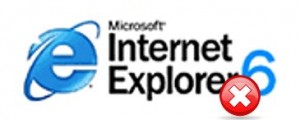 Recently, I had a client express interest in upgrading their hardware. The reasons were as you’d expect, speed, performance, compatibility, etc. I’ve had this client for some time now and tech service has been mainly geared towards home computing. Recent conversations and informal chat resulted in queries about the business side of things and so now I’m handling the business systems as well.
Recently, I had a client express interest in upgrading their hardware. The reasons were as you’d expect, speed, performance, compatibility, etc. I’ve had this client for some time now and tech service has been mainly geared towards home computing. Recent conversations and informal chat resulted in queries about the business side of things and so now I’m handling the business systems as well.
Having known the client for some time, I knew that the business was small and at most the upgrades would involve two to three systems. What happened next is what prompted this article. The client explained that the system setup had to remain intact on the new hardware. Not a big deal, it’s not like that hasn’t been asked before and understandably users get comfortable with a specific setup. It wasn’t until I looked at the original system that I realized there was a huge problem.
The problem wasn’t one of a damaged OS or faulty hardware. No, the problem was the OS itself and the client’s belief that this is the way it had to be. To bring you into the fold, the OS was Windows XP SP1. At first I hadn’t realized it and noticed it only when I opened Internet Explorer (IE) to download something to the system. Then it hit me. It was IE6! I immediately closed it and started looking for an explanation in the form of legacy software, connections or anything proprietary that could justify what I was seeing.
Ultimately, I found nothing. I later spoke with my client about the situation only to find out that at some point in time, likely years ago, he was told the system had to remain in that state in order to function properly with software already installed on the system. He was convinced to the point of disabling updates from Microsoft entirely. The system had not had an update in the last 10 years! This was definitely a shock, since the client seemed much more savvy when working with his modern home computers. Which brings us to the title of this article, How To Convince Clients To Upgrade Software.
Know Your Client
You’ve got to know your client. You deal with them directly, you know their level of resistance and openness to change. Use that to your advantage when explaining the upgrade options. If a client is extremely rigid in their beliefs about upgrading, then you have a difficult task ahead of you. Though not impossible, those types of clients will need data and lots of it. You may be their tech, but they still trust their own instincts when it comes to handling system maintenance whether they’re wrong or not.
Deliver Detailed But Simple Data
In order to convince your clients that they need to upgrade, you’ll need to provide them with some sort of proof. Though your word is correct, unfortunately, it isn’t enough. If it’s a system upgrade like the one in my example, then you need to understand the software on the system, how the network operates and whether there are any legacy issues to hinder the process. In my case there weren’t any, but before you run into any hiccups, be sure to find an alternative.
Offer Alternatives
If you’re going to make this happen, then you need some alternatives ready in case there are conflicts with old, outdated or no longer supported software. Most of the time you’ll find a better solution. That’s the easy part. It’s what you do with the old data that’s the hard part. Ideally, you’d like a way to import data from old software into modern software apps, but that isn’t always an option. In fact its rarely unproblematic. I’ve found that clients are most receptive to archived solutions. One such resolution is to take one of the outdated computers and store the entire database associated with the obsolete software onto it. No matter how it’s done the client must be presented with alternatives.
‘Geek It Down’ For Them
Clients don’t need to know how everything works. They don’t want to know the details of repairing, replacing or configuring a system. They want to know it will work, work well and is easy to manipulate. For example, if part of the upgrade process involves moving to cloud storage and backups, then explain to the client why it’s a better solution. Explain why with how. How will it make their life easier? How will it save them time and/or money? How will their business benefit from this change? Answering those questions will make for a pleasant conversation and result in a favorable response.
Conclusion
You can’t convince everyone all the time, but as tech professionals we have a limited responsibility to educate our clients enough to force them into advancing with the technology they use. In the end you’ll both be happier, the systems will be more versatile and their business will be more resourceful.
Your Thoughts
How do you convince clients to upgrade their systems? Maybe you prefer not to upgrade them. Let us know in the comments!
If you enjoyed or found this article useful, please show us some support by liking us on Facebook or by sharing us on your favorite social website. Thanks!

